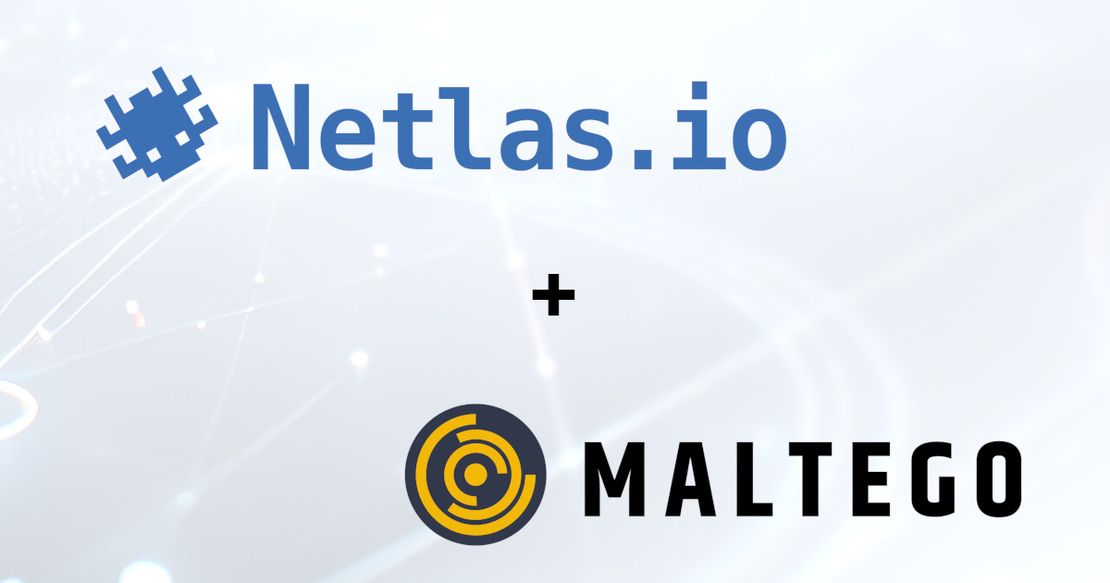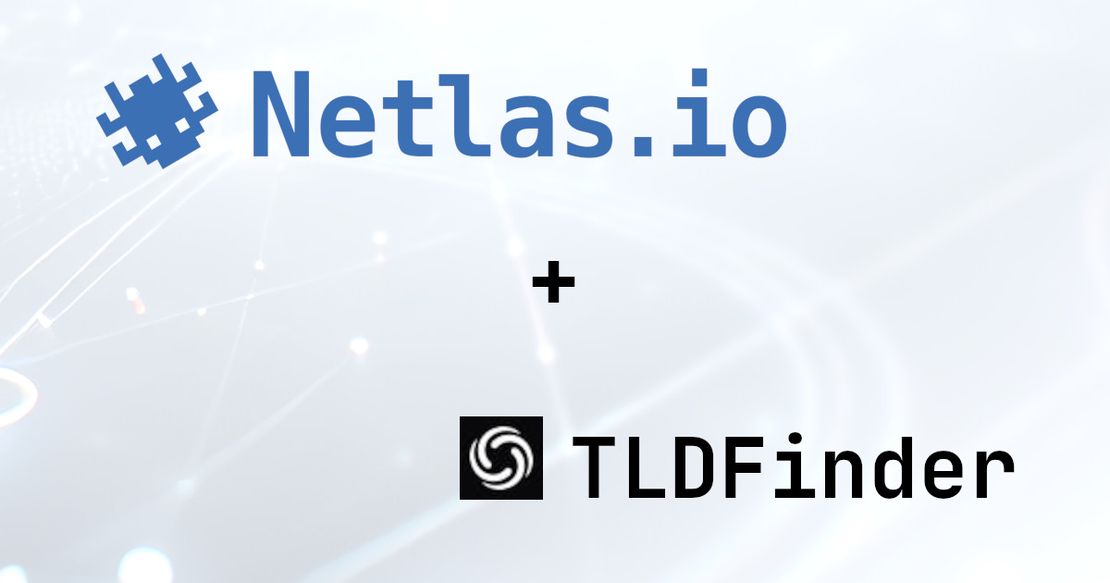What is Threat Intelligence
May 27, 2025
17 min read
Threat intelligence is the systematic examination of factual data on cyber threats, empowering security professionals to interpret incidents within their own environments and craft precise countermeasures for identified vulnerabilities.
Built on raw data—much like open source intelligence—this practice delivers critical insights (for example, who your adversaries are, what drives them and what resources they possess, and which signs of compromise to watch for), all of which inform smarter security decisions.
As industries accelerate their digital transformations, the need for strong cyber defenses continues to climb. Statista forecasts the global Cyber Threat Intelligence market will exceed $44 billion by 2033, underscoring the value of data-driven protection in corporate strategy. Likewise, the Recorded Future 2023 State of Threat Intelligence survey found that roughly 70.9 percent of organizations have dedicated teams focused on gathering and interpreting threat data.
In the following sections, you’ll gain a comprehensive look at how a mature threat intelligence program can uncover, assess, and neutralize cyber risks—ensuring a proactive security posture. You’ll learn about its fundamental elements, why it matters, and how to integrate it into your organization to prevent intrusions and attacks.
Essential Insights
- Empirical cyber threat data empowers security teams to forecast and neutralize attacks across tactical, technical, operational, and strategic dimensions, allowing organizations to stay one step ahead of adversaries.
- Advanced Threat Intelligence Platforms synthesize external threat signals with in-house security logs, offering features like automated enrichment, risk scoring, and collaborative case management to accelerate detection and response.
- Artificial intelligence and machine learning models fuel continuous harvesting and interpretation of threat data—flagging anomalous behaviors and hidden attack chains without constant human supervision.
- Intelligence-driven functions such as incident response orchestration, security operations center workflows, proactive threat hunting, and vulnerability prioritization ensure swift containment and system hardening.
- By ranking threats according to potential impact and probability, organizations can allocate budget and resources more effectively and align cyber defences with core business goals.
Understanding Threat Intelligence Fundamentals
Threat intelligence transforms disparate security data into meaningful guidance, empowering organizations to anticipate malicious campaigns, adapt defenses, and minimize breach impact. By translating raw indicators into strategic recommendations, it bridges the gap between technical alerts and business-level decision-making.
Defining Threat Intelligence and Its Objectives
Threat intelligence is the practice of collecting, filtering, and interpreting information about cyber adversaries to support preemptive security measures. Its goals include:
- Early Warning – Spotting new attack vectors and exploit trends before they reach production systems.
- Contextual Awareness – Linking threats to their origins, motives, and tooling, so defenders understand not just the “what” but the “why.”
- Actionable Playbooks – Generating concise response procedures and detection signatures rather than dumping raw logs.
- Strategic Alignment – Ensuring security activities sync with organizational priorities, compliance requirements, and risk appetites.
Core Elements of Threat Intelligence
A robust intelligence program draws on multiple data streams and transforms them into prioritized insights:
- Diverse Source Aggregation – Incorporating telemetry from firewalls, endpoint sensors, honeypots, dark-web forums, and open-source repositories.
- Context Enrichment – Augmenting threat data with geolocation, actor profiling, and historical attack records to assess credibility and relevance.
- Automated Processing – Employing signature extraction, anomaly detection, and correlation engines to highlight the most critical indicators.
- Human Validation – Leveraging expert analysts to review automated findings, identify false positives, and craft narrative briefs for stakeholders.
Advantages Gained from Threat Intelligence
- Uncover Hidden Campaigns
Pinpoint stealthy intrusion attempts that evade perimeter defenses by correlating low-level anomalies into coherent attack chains.
- Optimize Resource Allocation
Direct IT investments toward protecting the systems and processes most likely to be targeted, reducing wasted effort.
- Accelerate Incident Handling
Provide security teams with pre-built response templates and forensic indicators, cutting mean time to detect and remediate.
- Support Regulatory Compliance
Offer auditable evidence of proactive risk management practices, aiding alignment with GDPR, PCI DSS, and other standards.
- Enhance Executive Reporting
Translate technical findings into risk scores and business impact narratives that inform board-level strategy sessions.
Identifying Recipients of Threat Intelligence Value
- Small and Medium-Sized Enterprises
Gain enterprise-grade visibility without large security budgets, using shared feeds and managed services to fill expertise gaps.
- Large Corporations and Government Agencies
Leverage internal intelligence cells to fuse proprietary logs with commercial feeds, tailoring insights to complex, multi-tier infrastructures.
- Managed Security Service Providers (MSSPs)
Aggregate intelligence across clients to detect industry-wide threats and deliver customized alerts at scale.
- C-Suite and Risk Officers
Utilize summarized threat reports to guide investment decisions, adjust cyber insurance coverage, and communicate exposure levels to stakeholders.
- Security Architects and Engineers
Integrate IOCs into detection rules, design mitigations for emerging vulnerabilities, and validate the effectiveness of controls against real-world adversaries.
Request Your Free 14-Day Trial
Submit a request to try Netlas free for 14 days with full access to all features.
Why Cyber Threat Intelligence Matters
Cyber threat intelligence serves as a compass in the ever-shifting landscape of digital risk, offering organizations the foresight needed to detect and neutralize malicious activity before it escalates. By dedicating resources to a structured intelligence program, businesses gain a clearer view of emerging tactics that could disrupt operations, helping to safeguard critical assets and support long-term resilience.
Overcoming Cybersecurity Challenges with Intelligence
Modern security teams face an avalanche of logs, constantly evolving exploits, and a shortage of seasoned analysts. Intelligence solutions ease these pressures by unifying and validating data from multiple origins, so teams no longer drown in raw alerts. Machine-driven analysis further sifts through high volumes of information, flagging what truly matters. Key capabilities include:
- Unified Threat Correlation – Merging third-party bulletins, dark web chatter, and internal event logs into a single pane of glass for more coherent insights.
- Prioritized, Context-Rich Alerts – Scoring each incident by business impact and threat actor profile to guide investigation efforts.
- Playbook Generation for Novel Attacks – Auto-creating step-by-step response procedures when unfamiliar patterns emerge.
- Machine Learning-Powered Trend Forecasting – Predicting likely attack campaigns by analyzing historical data and actor behaviors.
- Automated Threat Scoring – Assigning risk ratings to new indicators of compromise to speed up triage and reduce analyst workload.
Strengthening Organizational Security Posture
Embedding threat intelligence into your security fabric transforms reactive defenses into proactive shields. Consolidated feeds drive next-generation firewalls, intrusion-prevention systems, and SIEM platforms, fine-tuning detection rules in real time. Continuous comparison of your controls against peer benchmarks and industry-specific threat landscapes uncovers blind spots and informs targeted enhancements. Over time, this intelligence-led approach shortens incident response times, limits breach impact, and reinforces compliance with evolving regulatory mandates
Overview of the Threat Intelligence Lifecycle
The threat intelligence lifecycle is a continuous loop through which security teams gather, interpret, and share insights about malicious actors. By following a structured sequence of activities, organizations can refine their defensive measures and stay ahead of evolving cyber risks.
Step 1: Strategic Planning
At the outset, security leaders collaborate with business stakeholders—ranging from C-suite executives to network engineers—to define clear intelligence objectives. These requirements specify the precise questions that the program must address, such as identifying which vulnerabilities pose the greatest risk to key assets or forecasting emerging malware trends that could affect critical systems.
Step 2: Threat Data Collection – Collection Method in Threat Intelligence Articles
In this phase, practitioners acquire unprocessed intelligence to satisfy the previously established goals. They employ multiple collection methods in threat intelligence articles, ensuring a diverse and balanced dataset that reflects both external and internal threat landscapes.
Leveraging Threat Intelligence Feeds
- Commercial and Open Feeds: Subscriptions to paid and free services supply real-time indicators of compromise (IoCs), malware hashes, and phishing URLs.
- Specialized Streams: Feeds focused on sector-specific threats—like financial fraud or industrial control systems—offer deeper context.
- Raw vs. Curated: Some feeds deliver unfiltered logs for bespoke analysis, while others provide pre-analyzed alerts ready for immediate action.
Engaging Information Sharing Communities
- Industry ISACs/ISAOs: Sector-specific alliances (e.g., healthcare, utilities, finance) facilitate peer-to-peer exchange of threat reports and remediation tactics.
- Global Platforms: Open-source projects such as MISP and commercial threat-sharing networks connect participants across regions, aiding in rapid discovery of emerging campaigns.
- Academic Collaborations: Partnerships with research institutions often yield early warning on novel exploits and zero-day vulnerabilities.
Utilizing Internal Security Logs
- SIEM and XDR Systems: Aggregated logs from firewalls, routers, and intrusion-detection tools form a historical record of attempted breaches.
- Endpoint Telemetry: Data from antivirus engines, EDR agents, and system event logs highlight suspicious processes and lateral-movement attempts.
- Cloud Service Monitoring: Audit trails and API logs from cloud platforms reveal misconfigurations or unauthorized access patterns.
All collected information is typically centralized in a threat intelligence platform or SIEM solution for unified management.
Step 3: Data Processing
Raw inputs are standardized, de-duplicated, and enriched with contextual metadata—such as geolocation, known attacker profiles, and related CVEs. Automated engines and AI-driven modules often apply frameworks like MITRE ATT&CK to map observed behaviors to established tactics, filtering out noise and surfacing high-priority indicators.
Step 4: Insightful Analysis
Analysts transform processed data into actionable intelligence by performing attribution, trend forecasting, and risk scoring. They investigate patterns—such as recurring phishing themes or lateral-movement chains—to predict probable next steps by threat actors and to uncover weak points in the organization’s infrastructure.
Step 5: Dissemination of Intelligence
Findings and recommendations are distributed to the appropriate teams via tailored reports, executive dashboards, and direct integrations:
- SOAR and SIEM Integration: Automated playbooks update detection rules and generate real-time alerts.
- Incident Response Briefs: Concise summaries guide triage and containment efforts.
- Executive Summaries: High-level risk bulletins inform board members and compliance officers.
Step 6: Feedback and Refinement
After deployment, stakeholders review outcomes—measuring metrics like mean time to detect (MTTD) and mean time to respond (MTTR). Their input feeds back into the planning stage, allowing the intelligence cycle to evolve, address new gaps, and continuously improve relevance and accuracy.
Exploring Different Types of Threat Intelligence
Organizations leverage various threat intelligence categories to address security concerns at different organizational layers. Understanding each type ensures that insights are tailored to the right audience and use case.
Tactical‑Level Threat Intelligence
At the tactical level, intelligence focuses on imminent threats and specific indicators of compromise (IOCs)—such as malicious IPs, URLs, file hashes, and suspicious domains. This form is typically machine-readable and designed for rapid ingestion into firewalls, intrusion detection systems, and other security tools via API or automated feeds.
- Data Freshness: IOCs often expire quickly as attackers rotate infrastructure. Automation: Commonly sourced from open feeds and commercial services with minimal human intervention.
- Limitations: High false-positive rates and little insight into attacker objectives.
- Added Insight: Include threat actor reputation scores to help prioritize which IOCs to act upon first.
Operational‑Level Threat Intelligence
Operational intelligence uncovers the actors behind attacks, their motives, and the methods they employ (TTPs). It goes beyond raw IOCs to map out entire campaigns, helping security teams anticipate next steps and tailor defenses.
- Attribution: Identifies which group is targeting your organization.
- Motivation Analysis: Discerns whether financial gain, espionage, or disruption drives the campaign.
- Campaign Lifecycle: Tracks initial compromise through lateral movement to data exfiltration.
- Added Insight: Incorporate seasonal or calendar-based patterns (e.g., holiday downtime targets) to forecast likely attack windows.
Strategic‑Level Threat Intelligence
Strategic intelligence offers a bird’s-eye view of how cyber threats intersect with geopolitical events, industry trends, and regulatory shifts. Aimed at executives, this intelligence informs budget allocations, policy decisions, and long-term security planning.
- Macro Trends: Examines how economic downturns or international tensions influence attack volumes.
- Risk Assessments: Aligns threat scenarios with business impact, compliance requirements, and corporate objectives.
- Investment Guidance: Recommends security initiatives that balance cost, risk, and strategic value.
- Added Insight: Include cost–benefit analyses of prospective security projects to help justify funding to the board.
Technical Level Threat Intelligence
Technical intelligence dives into the granular details of malware behavior, network signatures, and vulnerability exploit techniques. It equips analysts with the precise information needed to craft detection rules and remediate infections.
- Signature Details: Provides patterns for YARA, Snort, or Suricata rules.
- Exploit Mechanics: Describes how specific vulnerabilities are chained to penetrate systems.
- Payload Characteristics: Outlines encryption routines, command-and-control protocols, and data exfiltration methods.
- Added Insight: Offer configurable detection templates that can be tuned to an organization’s unique environment, reducing noise and improving detection accuracy.
Seeing is Believing
See how Netlas can elevate your threat analysis. Book a quick demo with our team.
Enhancing Threat Intelligence with Machine Learning
As organizations ingest ever-larger volumes of signals—from public websites and forums to encrypted chatrooms and sensor logs—manual analysis becomes impractical. Machine learning fills this gap by automating the fusion of disparate sources into a unified threat landscape.
- Knowledge-Graph Construction
Algorithms ingest raw records and map entities (IPs, file names, actor groups) into a graph of linked events. This structure makes it simpler to trace attack chains across multiple reports.
- Cross-Lingual Text Mining
Advanced NLP pipelines translate and normalize unstructured intelligence—whether it’s vendor advisories in German or darknet posts in Mandarin—tagging synonyms and homonyms so analysts aren’t misled by context.
- Risk-Based Alert Triage
Supervised learning models assign dynamic severity scores by combining factors like asset criticality, exploit maturity, and threat actor reputation. This slashes false positives and accelerates investigation workflows.
- Predictive Attack Forecasting
Time-series and clustering techniques identify emerging patterns—such as a sudden spike in phishing domains—so teams can preemptively harden vulnerable systems before exploits go live.
Deploying Threat Intelligence Tools and Services
An effective CTI program weaves together specialized platforms, real-time feeds, and intelligent automation. Together, these components streamline detection, investigation, and response.
Key Threat Intelligence Platforms
- Dedicated CTI Hubs
Centralize external feeds and internal logs, offering drag-and-drop dashboards, API-driven workflows, and collaborative investigation workspaces.
- SOAR Solutions
Automate response playbooks—quarantining endpoints, updating firewall policies, and generating tickets—so repeatable tasks no longer bottleneck analysts.
- Open-Source Exchange Frameworks
Tools like MISP or OpenCTI enable peers to co-author threat reports, share signature rules, and build community-driven taxonomies.
- SIEM-Embedded Intelligence Modules
Bring CTI alerts directly into log-aggregation engines, correlating real-time security events with known indicators and reducing the need to toggle between consoles.
Comprehensive Threat Data Feeds
- Open-Source Streams
Crawl public blogs, code repositories, and paste sites for fresh IOCs and exploit disclosures.
- Dark-Web Harvesters
Monitor illicit marketplaces, underground chats, and private Telegram channels for chatter on zero-days and botnet campaigns.
- Honeynet Sensors
Deploy decoy systems that mimic high-value targets, capturing novel malware strains and attacker techniques in the wild.
- Bug-Bounty and Vendor Advisories
Ingest vulnerability reports directly from security researchers and software vendors, often surfacing flaws before they reach exploit kits.
- Industry Consortia Feeds
Leverage sector-specific streams—such as finance ISACs or healthcare ISAOs—to gain insights tailored to your organization’s vertical.
Role of AI and Machine Learning
- Anomaly Detection Engines
Unsupervised models flag deviations from normal network traffic or user behavior, catching insider threats and stealthy intrusions.
- Intent Classification
Sequence models parse attack narratives to differentiate reconnaissance scans from credential-stuffing attempts, guiding next-step playbooks.
- Adaptive Signature Tuning
Continuous feedback loops retrain detection rules as attackers morph their payloads, ensuring signatures stay effective.
- Automated Enrichment
ML agents pull in attribution data—like actor profiles, past campaign dates, and malware lineage—to augment each new indicator without manual lookups.
Practical Use Cases of Threat Intelligence
By transforming raw threat signals into tailored insights, organizations can apply cyber intelligence across multiple domains—turning abstract data into concrete defensive actions that mitigate risk and streamline security workflows.
Incident Response and Triage with Threat Intelligence
When a breach occurs, intelligence-driven response accelerates containment and recovery:
- Faster Detection and Resolution Metrics
Measuring average detection and remediation times helps teams fine-tune playbooks and reduce downtime.
- Contextual Playbooks
Pre-built response steps—mapped to specific indicators—ensure that analysts know exactly which logs to check and which systems to isolate.
- Automated Alert Enrichment
Real-time feeds append geolocation, actor reputation, and malware lineage to incoming alarms, reducing investigation overhead.
- Post-Incident Insights
After-action reports leverage collected intelligence to refine controls and close gaps exposed during the event.
Integrating Security Operations & Threat Hunting
Threat intelligence injects proactive visibility into day-to-day SOC activities and hunting campaigns:
- Baseline Profiling
Behavioral analytics build “normal” activity models for users, devices, and applications—highlighting anomalies faster.
- Custom Detection Rules
Indicators of compromise feed directly into SIEM and EDR rulesets, spotting stealthy intrusions earlier.
- Hunt Playbook Libraries
Catalogues of TTP-driven queries guide hunters through systematic discovery of hidden adversary footholds.
- Collaborative Incident Collaboration
Shared dashboards and annotation tools let cross-team experts tag and hand off investigations seamlessly.
Vulnerability Management and Risk Analysis
Intelligence enriches vulnerability workflows by pinpointing which flaws pose real danger:
- Exploit Emergence Tracking
Monitoring dark-web chatter and exploit repositories flags vulnerabilities seeing active weaponization.
- Contextual Scoring
Combining CVSS ratings with observed exploit activity and asset criticality yields dynamic patch priorities.
- Remediation Roadmaps
Step-by-step guides outline configuration changes, hotfix applications, and compensating controls.
- Threat-Aware Risk Models
Risk registers incorporate threat actor goals and known campaign targets to inform enterprise risk assessments.
Threat Intelligence in Fraud Prevention
Beyond malware and intrusions, intelligence combats financial and identity fraud:
- Credential Leak Detection
Scanning paste sites and carder forums surfaces stolen credentials tied to your domains before attackers exploit them.
- Phishing Campaign Analysis
Fingerprinting email templates, domain registrations, and URL redirects reveals ongoing fraud schemes.
- Brand Impersonation Alerts
Monitoring brand mentions across social media and underground markets catches counterfeit sites and scam ads.
- Transaction Anomaly Signals
Behavioral scoring models flag unusual payment patterns—like round-number transfers or off-hours activity—to block fraudulent transactions.
Security Leadership and Threat Intelligence
Decision-makers rely on tailored intelligence to balance resources and risk:
Executive Dashboards High-level overviews translate security posture into business-impact metrics, aiding board-level discussions.
Investment Roadmaps
Threat trend analyses guide budget allocation—prioritizing controls that counter the most probable adversary tactics.
- Policy and Compliance Alignment
Intelligence briefs map observed threats to regulatory requirements, simplifying audit preparation and reporting.
- Vendor Risk Evaluation
Assess third-party security maturity by comparing supplier threat landscapes against organizational benchmarks.
Mitigating Third‑Party Risk
As ecosystems expand, partners and suppliers become attack vectors—intelligence helps map and manage these exposures:
- Continuous Supplier Monitoring
Real-time tracking of vendor breach reports and dark-web chatter highlights emerging risks.
- Shared Intelligence Pipelines
Secure information-sharing channels let trusted partners exchange indicators of compromise and remediation tips.
- Contractual SLA Integration
Embedding threat detection and reporting requirements into vendor agreements ensures timely incident notification.
- Risk Heatmaps
Visualizing third-party risk levels across geographic regions, product lines, and service types directs audit and oversight efforts.
Frequently Asked Questions: How Many Root Servers Are There
The Internet’s name-resolution system relies on 13 distinct root server identifiers—labeled A through M. However, thanks to anycast routing, these identities correspond to hundreds of physical server clusters scattered across the globe.
- Logical Instances: 13 unique server names handle DNS lookups at the top of the hierarchy.
- Physical Footprint: Over 1,000 nodes in more than 150 countries accelerate responses and provide redundancy.
- Operator Diversity: Managed by around 10 different organizations—ranging from academic institutions to non-profits—each contributes to global stability.
- Peak Load Handling: Combined, the network processes trillions of queries daily, ensuring rapid, reliable domain resolution.
What Are the Three Ps in Threat Intelligence?
These three pillars guide an intelligence-driven security strategy:
- Anticipatory
Actively research and monitor emerging tactics before they affect your environment—such as tracking zero-day exploits in underground forums.
- Forecasting
Use trend analysis and historical attack data to predict which systems or geographies are likely to be targeted next.
- Preventive
Translate predictions into concrete defenses—like updating firewall rules, patching vulnerable software, or deploying honeypots to deter specific threat actors.
Key Responsibilities of a Threat Intelligence Team
A dedicated CTI unit transforms data into defensive action through:
- Data Aggregation
Collecting feeds from open-source portals, commercial services, and internal logs to build a unified threat view.
- Actor Profiling
Mapping adversaries’ capabilities, motivations, and historical campaigns to assess likely objectives.
- Indicator Management
Validating, de-duplicating, and enriching IOCs—including IP addresses, hashes, and domain information—for tool integration.
- Analytical Reporting
Crafting clear, tailored briefs—technical alerts for engineers and strategic summaries for executives.
- Toolchain Integration
Embedding intelligence into firewalls, SIEMs, EDR/XDR, and SOAR playbooks to automate detection and response.
- Feedback Loops
Reviewing incident outcomes and updating collection priorities to continuously refine the intelligence process.
Conclusion and Next Steps
By combining global DNS infrastructure insights with precise cyber-threat monitoring, organizations can both resolve network requests efficiently and defend against sophisticated attacks. To put these concepts into practice:
- Evaluate Current Coverage
Map which root server anycast regions and CTI feeds you already leverage.
- Pilot a New Platform
Select a threat intelligence solution—open-source or commercial—and integrate it with your SIEM or EDR.
- Train Key Personnel
Conduct workshops on interpreting risk scores, writing detection rules, and translating findings for leadership.
- Define Success Metrics
Establish benchmarks like reduced mean time to detect (MTTD) or patch cycle improvements.
- Iterate & Scale
Gather feedback from SOC analysts and stakeholders, then expand your intelligence capabilities to cover new data sources and use cases.

I can show you how deep the Internet really goes
Discover exposed assets, infrastructure links, and threat surfaces across the global Internet.
Related Posts

February 17, 2025
theHarvester: a Classic Open Source Intelligence Tool

January 20, 2025
Using Maltego with Netlas Module

August 30, 2024
Using DNS History in Cybersecurity

February 7, 2025
Using Subfinder with Netlas Module

December 27, 2024
Using theHarvester with Netlas

December 23, 2024
Using TLDFinder with Netlas















